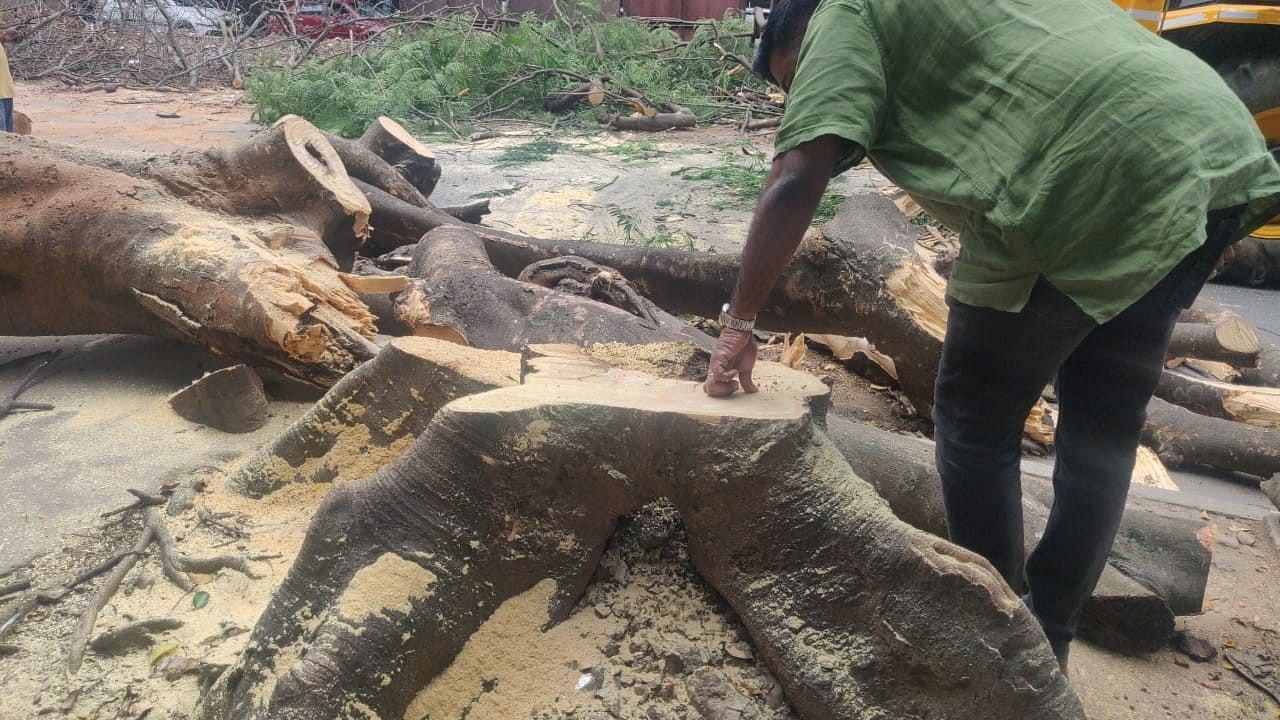
BBMP plans to chop at least 60 trees immediately as it has received approval from the expert committee on trees.
Credit: Special Arrangement
Bengaluru: The city’s green landscape is put to threat once again as 207 trees, spanning 24 species and standing for decades, confront potential destruction due to the flyover planned between Ejipura and Kendriya Sadan junction.
The trees surveyed were as tall as 10 metres and had girths going up to 396 inches. The most abundant species were majestic rain trees. The canopies of many of these rain trees extended across a large part of the road, providing shade to commuters, eateries, vendors and other business establishments.
These were observations by a rapid environmental impact assessment report, prepared by Harini Nagendra, Seema Mundoli, Vidya Ramesh, Vivek G and Moumi Das of Azim Premji University.
"Infrastructure — be it roads or flyovers — is important for a city’s development. But we are in the era of climate change. The devastating impact of extreme and unpredictable weather events is a reality faced by the residents of Bengaluru, be it floods or water scarcity, exacerbated by air pollution. We can no longer persist on the path of development at all costs,” the report highlights.
The report called for the immediate halt of the piecemeal destruction of the city’s greenery for individual projects, which has resulted in a reduction in the overall green cover of the city over the last few decades.
"While planning infrastructure projects, the implications for the loss of urban greenery needs to be made central to decision-making,” it said.
The report was also not convinced with the Bruhat Bengaluru Mahanagara Palike's (BBMP) plan to translocate some trees and undertake compensatory afforestation. “The benefits that the trees provide in terms of mitigating pollution and urban heat island, and sequestering carbon are lost where it is needed the most — in the congested road with heavy vehicular traffic. There also exists very little follow-up on any saplings planted,” they pointed out.
The Azim Premji University faculty also drew attention to the Bengaluru Climate Action Plan (BCAP) 2023, which was released recently. The plan was seen as a huge step forward to address the environmental and climate change challenges of the city, which had acknowledged that the window of opportunity for securing a liveable future for Bengaluru is rapidly closing. “The flyover decimating the greenery of what was once the Garden City will undermine the very vision of the BCAP.”
“By cutting a few trees each time for flyovers, metros and road-widening, we have lost so much of the green cover of the city. What we are left with are congested roads and hours spent in traffic inhaling toxic fumes in searing temperatures. This cannot be good for the city, its residents or development,” the report sums up, underlining its opposition to the cutting of trees.
Flyover in, trees out
The survey found 207 trees of 24 species from 11 families along the 1.4-km stretch where the BBMP is building a flyover. The trees were as tall as 10 metres and had girths going up to 396 inches.
BBMP plans to chop at least 60 trees immediately as it has received approval from the expert committee on trees.
Credit: Special Arrangement
Environmental impact
* Carbon sinks irreversibly lost
* Urban heat island and its debilitating impacts
* Dust pollution
BBMP plans to chop at least 60 trees immediately as it has received approval from the expert committee on trees.
Credit: Special Arrangement